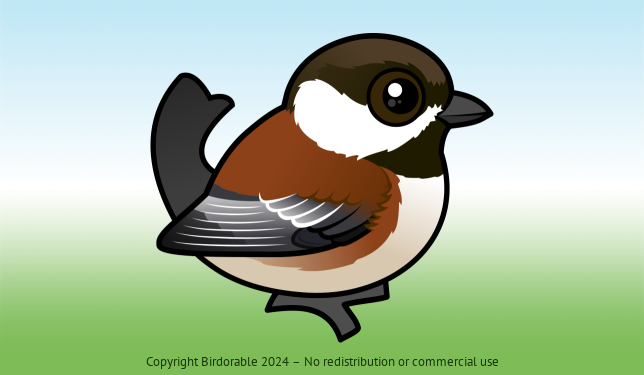The chestnut-backed chickadee is a small songbird native to the Pacific Northwest of North America. This bird is easily identified by its distinctive chestnut-brown back and sides, contrasting with a black cap, bib, and white cheeks.
Chestnut-backed chickadees inhabit coastal forests and dense, moist woodlands, often favoring coniferous trees. They primarily feed on insects, seeds, and berries, and are known for their agile foraging, often hanging upside down to access food.
These chickadees have a variety of vocalizations, including a high-pitched and scratch "chick-a-dee" call. They are social birds, frequently joining mixed-species flocks during the non-breeding season to improve their foraging efficiency and predator avoidance.
Nesting in tree cavities or nest boxes, chestnut-backed chickadees use moss, fur, and feathers to construct their nests. They typically lay 5-8 eggs, which are incubated by the female for about two weeks. Both parents participate in feeding and raising the chicks.

































